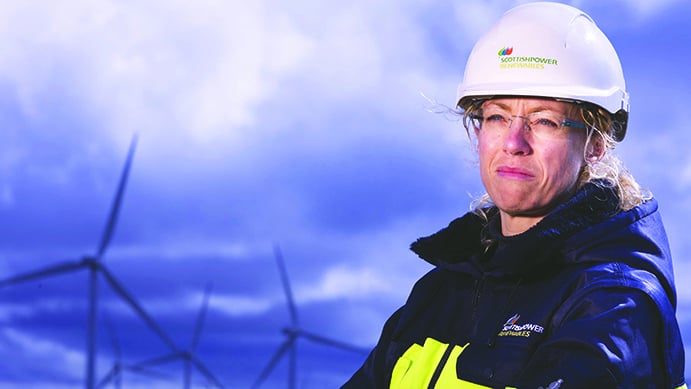Industry bodies are working together to bring more women into engineering and entice women engineers lost to the profession after career breaks back into the fold
It is well known that there is a significant gender gap within engineering, and the professional bodies have invested a considerable amount of time and effort into improving diversity in the profession.
However, while most of these efforts are focused on trying to encourage young women to enter the profession at the start of their careers, much less attention is paid to trying to entice them back into the industry after having children.

According to research by the Women’s Engineering Society (WES), there are approximately 20,000 skilled engineers who have left the profession, and now find that they cannot get back in again.
Tapping into this lost talent pool could help companies tackle some of their skills shortages, while improving diversity within the profession.
Now a growing number of industry bodies are investigating ways to seek out these lost engineers, and offer them a path back into the profession.
The Institute of Marine, Engineering, Science and Technology (IMarEST), for example, has launched a return-to-work programme for professionals who have taken a career break, or are looking to transfer to a different sector.
The programme, known as STEM Returners, was developed alongside WES, and involves a 13-week paid employment placement at one of a number of partner companies.
Many returners have been out of the industry for between one to 10 years, which can have a significant impact on their confidence, according to Natalie Desty, director of workforce development at IMarEST.
“Returners tend to undervalue their skills and experience, and expect to come in at a much less senior role than they would have been in when they left,” said Desty.
But even those who do apply for a role can often be overlooked by recruitment agencies who will not put candidates forward for a role if they have a gap in their CV, as this is often equated with a deterioration in skills.
What’s more, with so much of the recruitment process now carried out online using artificial intelligence, many CVs will be discounted by such systems before they ever reach a hiring manager, said Desty.
“If you then add to that any unconscious bias by the hiring manager against those with a CV gap of two or three years or more, believing that the person’s skills aren’t up to date, then more often than not they are discounted straightaway,” she said.
Alongside the experience gained from a 13-week work placement, the programme is designed to offer the returners support such as confidence building, training, career coaching, networking opportunities and peer support.

At the end of the programme, if both the employer and returners are happy, all those going through the placement are matched with an existing job vacancy within the company. In this way the placement also acts as a 13-week job interview for the employer, while allowing the engineer to really get to know the company before joining.
In January the first 10 returners will begin their placement with the programme’s pilot partner, construction company Kier, where they will be working in different areas of the business.
Around seven other partner organisations are also expected to begin placements between January and April.
“I would say we are probably looking to get 60-70 people placed within the next six months, and that is obviously just with the companies that are currently signed up to run the programme,” said Desty.
Similarly, Equate Scotland, which aims to redress the gender imbalance in STEM sectors in the country, has also established its own returners programme. Following a successful pilot in 2016, the organisation, in partnership with the trade union Prospect and with funding from the Scottish government, launched the programme in May 2017.
Three women began paid placements in July and August; two with Scottish Power and one with EDF Energy, with a further two Scottish Power placements beginning in October.
The programme gives women structured support to brush up their skills and rebuild their confidence. Participants receive a range of support services, including workshops, webinars, networking events, one-to-one career clinics and online support.
Similarly, the Institute of Civil Engineers (ICE) is partnering with a number of engineering firms, including Morgan Sindall, to offer paid work placements for professionals returning to work after a career break.
The placements, called returnships – an initiative first developed in the financial industry by Goldman Sachs in 2008 – offer 10-12 week contracts in which the participants work on one of the company’s projects while gaining the opportunity to refresh their skills.
For those who are already planning to return to work for their company after a period of maternity leave, WISE offers a two-day returners programme in partnership with Skills 4. Companies taking part in the programme, which has been running for 10 years, include lead host Atkins, as well as HS2, BAM Nutall, BuroHappold, UCL, Cardiff University, Westfield and Mott MacDonald, said Jayne Little, managing director at Skills 4.
“There is some good work going on,” she said. “However, if the UK is going to meet its aspirations of a more diverse workforce in certain industries and boardrooms, many public and private sectors must do more if talented people are to advance their careers and stay in industries, which can ill-afford a brain drain.”
For Kier, which is taking part in IMarEST’s returner programme, the scheme will allow it to offer an alternative route into the company, said Jan Atkinson, talent and organisational development director.
“We undertake a lot of targeted activity when recruiting for apprentices, graduates and early talent, and wanted to diversify our entry routes into Kier,” Atkinson said.
The programme will provide a way for skilled professionals to get back in to work more easily, or make the switch into the built environment sector, while offering a personalised plan and mentoring scheme to help make the transition a successful one, she said.
“Our sector has a well-publicised skills shortage in technical and professional skills and a diversity challenge,” said Atkinson. “So we need to make the pathway into Kier accessible and attractive to talented professionals at any stage in their career journey, and provide them with the right support, particularly at times when the transition might feel a little harder to achieve.”




Project to investigate hybrid approach to titanium manufacturing
What is this a hybrid of? Superplastic forming tends to be performed slowly as otherwise the behaviour is the hot creep that typifies hot...